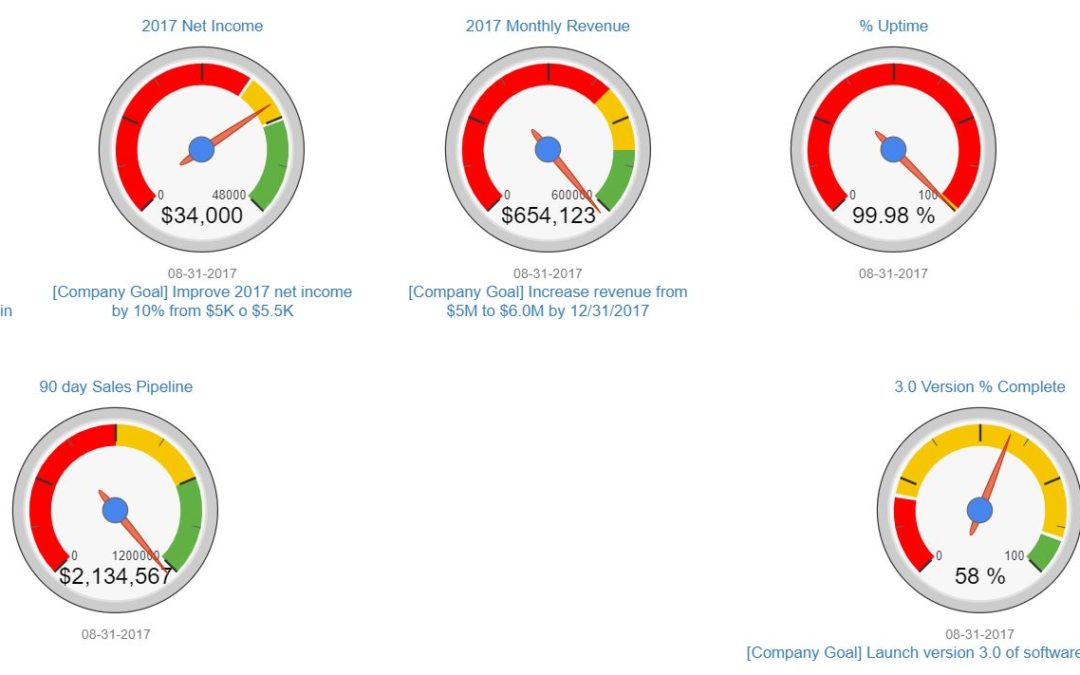The new year has begun, now what?
In 2017, Envisionable’s clients achieved a 20% increase in revenue and 150% increase in profit!
Did you achieve what you wanted for your business in 2017? Do you want to achieve greater results in 2018?
After working with over 50 business in 2017, here’s what we found as the 5 critical steps to generating more revenue and profit, while realizing the full potential of your business. Our mission is to help small businesses reach their full potential.
So HOW do you do it? How do you make 2018 your best year yet?
Step 1: Perform An Assessment – Where Are You Right Now?
The first step in generating greater results in 2018 is to determine your current state. It seems really simple, yet many small business owners just don’t know where they stand based on their numbers.
You may need a financial model, which defines the financial drivers of your business. This is a critical component for success. If you don’t understand the profitability of each of your products, you’ll have no way of knowing what to do in order to improve your results.
We’ve seen this become one of the biggest barriers for business success.
Do you know your numbers? What was your revenue in 2017? What was your gross margin, by product? What was your net profit? Diving even deeper, what products were most/least profitable?
You might also consider performing some light strategic planing.
Here’s a simple agenda you can use for your strategic planning session. We’ve facilitated many of these sessions and we’re happy to chat with you about facilitating one for your company.
{{cta(‘e016c2d3-7cf8-4d86-a7ae-0793de84af71’)}}
Finally, how happy are your employees and customers? When was the last time you asked?
Jack Welch, former CEO of GE is quoted as saying:
“There are only three measurements that tell you nearly everything you need to know about your organization’s overall performance: employee engagement, customer satisfaction, and cash flow. . . . It goes without saying that no company, small or large, can win over the long run without energized employees who believe in the mission and understand how to achieve it.”
Understanding your current state allows you to determine which areas need the most focus.
Step 2: Develop A Long-Term Vision
To avoid being short-sighted, you need to develop a long-term vision. The rate of change of business is accelerating, so you need to stop and think about what would you like your business to look like in five years for the following areas:
-Revenue
-Profits
-Customer Satisfaction And Customers (which customers will you pursue and even more important which customers will you NOT pursue?)
-Culture (core values and core purpose)
Try to be as detailed as possible with your vision. The clearer the vision, the greater the likelihood that you’ll meet them.
Download our free vision clarification guide here. This free guide walks you through the process of bringing clarity to your vision. Again, it’s critical that you know where you are leading your business AND communicate that with your staff.
Step 3: Develop 12-Month Goals
Once you (1) have clarity on your current state and (2) where you’re trying to take your business long-term, it’s time to get super-focused and pick the top three to five goals you’re going to focus on achieving over the next 12 months.
Having a strategic planning process certainly helps to narrow down those areas of your business, which need the most attention and can highlight growth opportunities that are ripe for harvesting.
This is where a budget and a financial model are critical. You must make sure your model or budget is accounting for those things that you’re looking to achieve over the next 12 months. For example, maybe you’re looking to expand in a particular area of the market and that will require more marketing spending or additional headcount. Have these priorities been expressed in your budget? What is the potential impact?
Write these goals down and make them accessible to each member of your team. We’ve created an easy to use tool for this an we would be happy to demo it for you. The DEMO only takes about an hour and you’ll walk away with some great ideas you can apply to your business.

Step 4: Define Who’s Accountable
You must assign accountability to each member of your team, if you expect to drive results. If you have three goals, each goal can’t require you, as the CEO or owner, to be the only one who is accountable.
To use some project management terminology, you must define the critical path to then make sure you are not part of the critical path.
The critical path is the sequence of project activities, which add up to the longest overall duration. The critical path determines the shortest time possible to complete the project.
If you’re always part of the critical path, you business is too reliant on you and will have difficulty scaling.
Step 5: Check-In Regularly
Once you’ve (1) have clarity on your current state (2) determined your long-term vision (3) broken your long-term vision into specific goals you’d like to achieve over the next 12 months and (4) assigned some accountability (not just you) for those goals – you need to set a check-in frequency. If you’ve done all this work, but never check-in to see how you are doing, you will fail.
A good place to start is with a monthly check-in. If you’ve found that it’s difficult to stay on track with this discipline, you can hire us to attend you monthly meeting and drive the agenda forward.
However you get this critical step done, it MUST happen or you will not achieve the results you want to achieve.
These are real world steps that have worked for our customers in 2017 and they will work for you too this year.
{{cta(‘b9a3ed81-299b-48e2-8fb9-4e9557ca62b9’)}}
